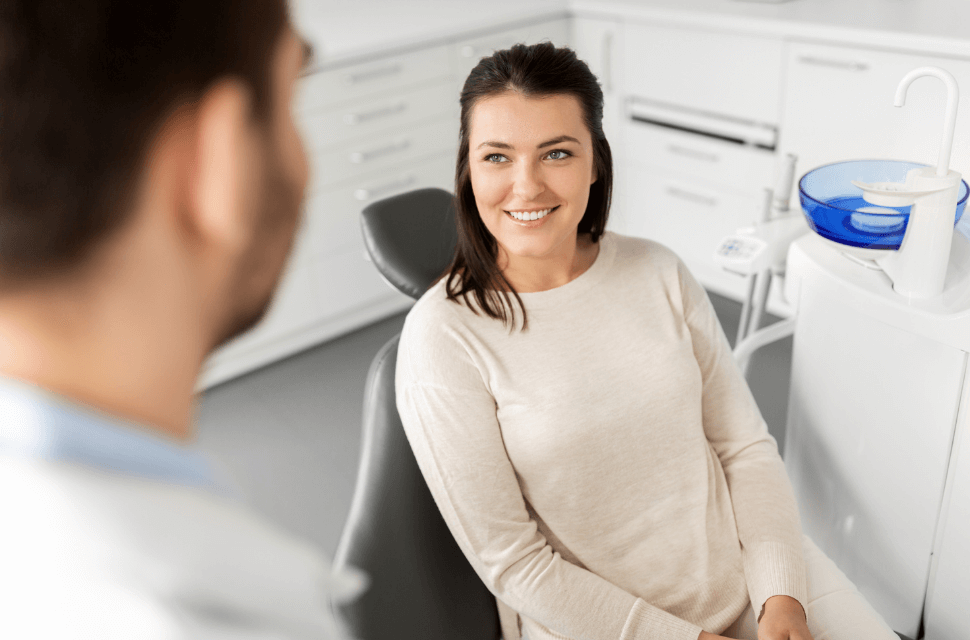Depending on what you tell us about your sleep problem and the severity of your snoring, we may refer you to a sleep specialist physician for a sleep test. This test, known as polysomnography or PSG, is non-invasive and may be done in your home or in a sleep center.
Lifestyle Changes
There are a number of things you can do to help yourself. These include:
- Weight loss – If you are overweight, losing weight can help your snoring and sleep apnea by reducing the size of the fat deposits around your soft palate, tongue, and neck.
- Sleep Position – Many people find that their snoring is worse if they sleep on their back. One way to train yourself not to sleep on your back is to place a tennis ball in a sock and sew it to the back of your pajama tops.
- Avoid drugs and alcohol – Sleeping pills and alcohol relax the muscles of the throat and can worsen snoring and sleep apnea. If you smoke, swelling of the air passages can also worsen snoring.
Devices Used to Control Snoring & Sleep Apnea
Two main devices are available for the control of snoring and obstructive sleep apnea. These devices must be worn every night to control your sleep problem.
CPAP (Continuous Positive Air Pressure) is a device that controls apnea by providing a stream of air, under slight pressure, through a tube into your nasal passage. This positive air pressure acts as a splint holding the tissues in the back of your throat open to prevent collapse. Use of this device requires a sleep study to determine the proper pressure to use.
Oral Appliances – Oral appliances are devices very much like sports mouth guards or removable orthodontic retainers that hold the airway open by either holding the tongue or jaw in a forward position. More about these in the section on Appliance Therapy. Since oral appliances are non-invasive and easy to use, they may be considered an early treatment option.
Surgery
The goal of any surgical procedure is to provide and maintain an open airway to prevent collapse during sleep. Surgical procedures are known as site-specific procedures because they treat a particular portion of the airway.
Surgery can be performed on the nasal passages to provide a clear passage for the flow of air by correcting a deviated septum, removing polyps and/or reducing the size of the bones in your nose known as turbinates.
Removal or reduction in size of the soft palata, uvula and back of tongue can be accomplished by procedures known as
- Uvulopalatopharyngoplasty (UPPP) – which involves removal of the uvula, soft palate and redundant tissue in the back of the throat and requires hospitalization.
- Laser-assisted Uvulopalatoplasty (LAUP) – This procedure is for the treatment of snoring only. In a LAUP the tissue of the uvula and soft palate are progressively removed in a series of office visits. Each treatment takes about 15 minutes and most people require between one and 3 visits to stop the snoring
- Radio-frequency Tissue Ablation (Somnoplasty) – Radio frequency waves are delivered by a needle electrode placed under the surface of the tissue and cause contraction of the excessive tissues that cause snoring. Again the procedure is done to cotnrol snoring only and is an office procedure.
- More involved surgical procedures can help to change tongue position, open the lower airway or reposition the structures in the lower third of the face. In extreme cases, a tracheostomy can be performed to by-pass all collapsible structures of the nose and throat.
Contact us
Snoring and sleep apnea can be very dangerous. Every person has different issues and it is vital that the treatment that you and your sleep physician choose is the best for you and your needs. A trained dentist can help find the right treatment options for you. Contact us and get the help you need!

